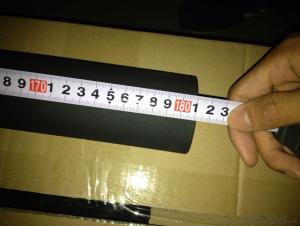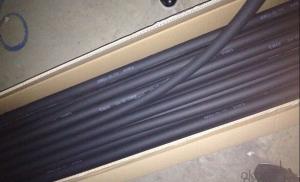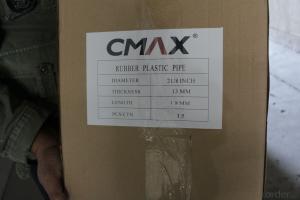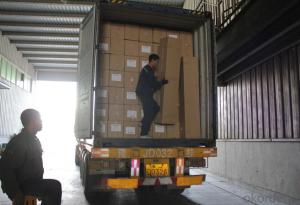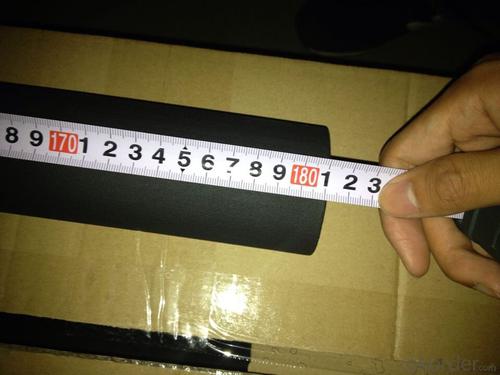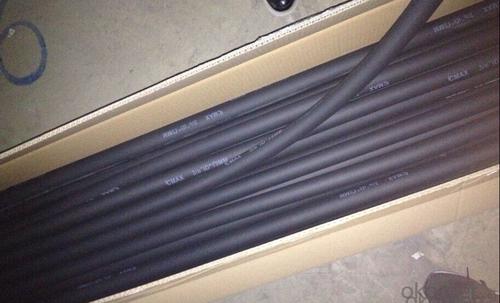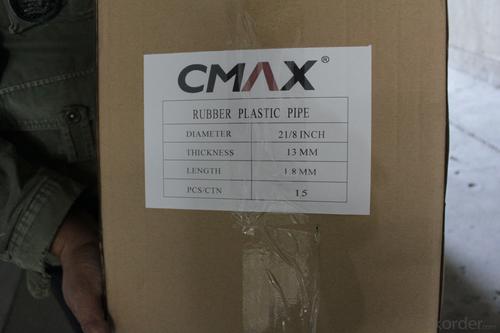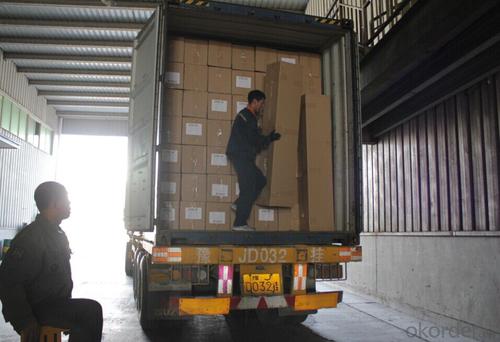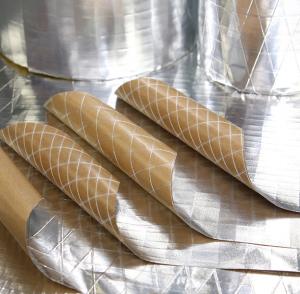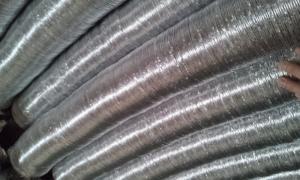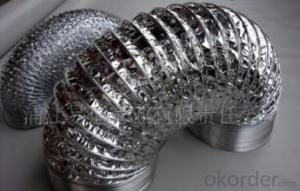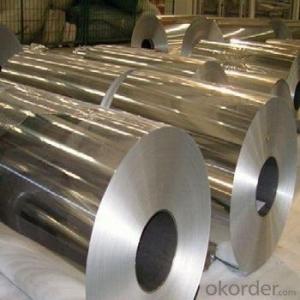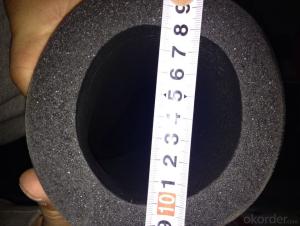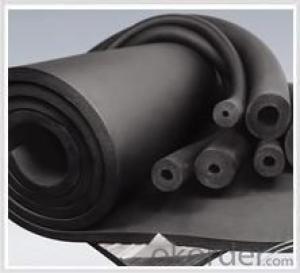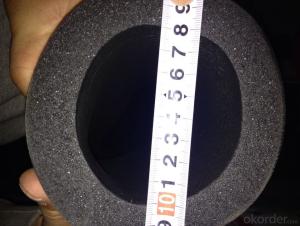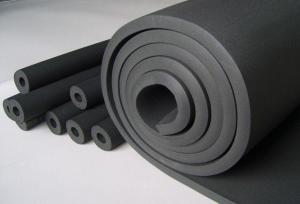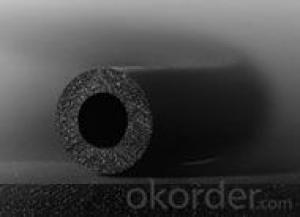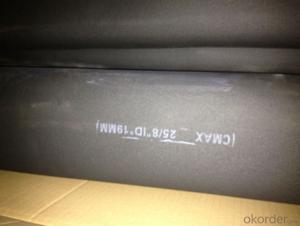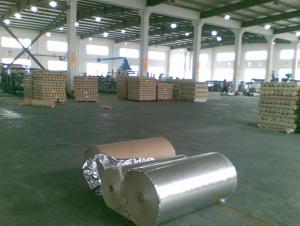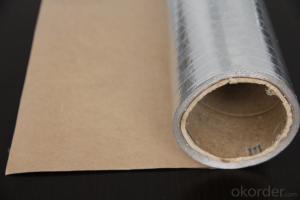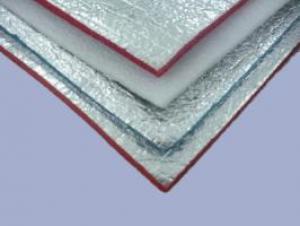Class 1 Rubber Insulation with Aluminum Foil Facing
- Loading Port:
- China Main Port
- Payment Terms:
- TT OR LC
- Min Order Qty:
- -
- Supply Capability:
- -
OKorder Service Pledge
Quality Product, Order Online Tracking, Timely Delivery
OKorder Financial Service
Credit Rating, Credit Services, Credit Purchasing
You Might Also Like
CMAX Rubber Plastic Product advantages:
Fire-blocking, Low Conductivity factor, Good pliability, Closed pore foaming, Good damp-proof property, Vibration resistance, Easy to install and beautiful appearance
| Item | Unit | Specification | Standard | |
| Density | Kg/m³ | ≤95 | GB/T6343 | |
| Oxygen index | % | ≥32 | GB/T2406 | |
| Flammability | SDR | —— | ≤75 | GB/T8627 |
| Conductivity factor | W/(m.k) | |||
| Average temperature | ||||
| -20°C | ≤0.031 | GB/T10294 | ||
| 0°C | ≤0.034 | |||
| 40°C | ≤0.036 | |||
| Watervapor permeability | Coefficient | g/(m.s.pa) | ≤2.8*10-11 | GB/T17146-1997 |
| Factor | —— | ≥7.0*10³ | ||
| Water absorption ratio in vacuum | % | ≤10 | GB/T17794-2008 | |
| Dimension stability | % | ≤10 | GB/T8811 | |
| 105±3°C,7d | ||||
| Crack resistance | N/cm | ≥2.5 | GB/T10808 | |
| Compression resilience ratio | % | ≥70 | GB/T6669-2001 | |
| Compression time 72h | ||||
| Anti-ozone | —— | Not cracking | GB/T7762 | |
| Ozone pressure 202mpa | ||||
| 200h | ||||
| Aging resistance | —— | Slightly crumpling, | GB/T16259 | |
| 150h | no cracks, | |||
| Temperature | °C | -40°C——110°C | GB/T17794 | |
- Q: This question asks for effective methods to clean aluminum foil facing that has become sticky or dirty, which is a common issue in kitchens.
- <p>To clean a sticky or dirty aluminum foil facing, start by removing any excess residue with a scraper or a plastic spatula. Then, mix a solution of warm water and dish soap, and gently scrub the surface with a soft cloth or sponge. Avoid abrasive materials that could scratch the surface. For stubborn stains, you can use a mixture of baking soda and water to create a paste, apply it to the area, and let it sit for a few minutes before scrubbing. Always rinse thoroughly and dry the surface to prevent further sticking. Regular cleaning can help maintain the cleanliness and functionality of your aluminum foil facing.</p>
- Q: This question asks for the correct method of wrapping food in aluminum foil, ensuring the shiny side faces outward.
- <p>To properly wrap food with aluminum foil, first ensure the shiny side of the foil faces outward. This side is non-stick and prevents food from sticking to the foil. Place the food in the center of a piece of foil large enough to cover it completely. Bring the edges of the foil together over the food, then fold and crimp the edges to seal tightly, creating a sealed pouch. This will help retain moisture and heat, and keep the food from sticking to the foil.</p>
- Q: This question asks for methods to clean aluminum foil after it has been used for cooking and has old food stuck to it.
- <p>To remove old food from aluminum foil facing after cooking, start by letting the foil cool down to avoid burns. Then, use a plastic scraper or the edge of a credit card to gently scrape off the food particles. For stubborn residue, you can soak the foil in warm, soapy water for a few minutes before scrubbing with a soft sponge or cloth. Avoid using metal scrubbers as they can scratch the foil. After cleaning, rinse thoroughly and dry before storing or reusing.</p>
- Q: This question asks about the optimal methods for placing food in a microwave using aluminum foil, specifically focusing on the orientation of the foil's facing.
- <p>The best way to store food in a microwave using aluminum foil is to avoid using it altogether. Aluminum foil is not recommended for use in microwaves because it can cause sparks and potentially start a fire. Instead, use microwave-safe containers made of glass, ceramic, or plastic. If you must use aluminum foil, ensure it does not touch the microwave's walls or ceiling and that it is not in direct contact with the food. However, for safety and efficiency, it's best to use appropriate microwave-safe materials.</p>
- Q: What are the types of food that should not be cooked with aluminum foil facing?
- <p>There are certain types of food that should not be cooked with aluminum foil facing. Acidic foods, such as tomatoes and citrus fruits, can react with the aluminum and potentially release harmful compounds. Foods high in salt or spices can also cause a reaction with the aluminum, leading to the leaching of aluminum into the food. Additionally, cooking acidic foods at high temperatures can increase the risk of aluminum contamination. It's best to avoid wrapping these types of foods in aluminum foil when cooking, or to use the dull side of the foil facing away from the food.</p>
- Q: This question asks for methods to prevent food waste when utilizing food covers or containers.
- <p>To avoid food waste with food covers or containers, plan your meals ahead of time and only prepare what you can consume. Use the right size container for the amount of food you have. Store leftovers properly by cooling them down quickly and sealing containers tightly to prevent spoilage. Always check the contents of your containers before shopping to avoid buying duplicates. Use containers with clear labels to easily identify what's inside and its preparation date. Finally, rotate your food storage to use older items first and reduce waste.</p>
- Q: This question asks for the method to wrap a hot pan using aluminum foil, with specific instructions on how the foil should face.
- <p>To wrap a hot pan with aluminum foil, first ensure the pan is stable and on a heat-resistant surface. Take a large piece of aluminum foil, about twice the size of the pan. Hold one corner of the foil and drape it over the pan, allowing the shiny side to face the pan. Gently press the foil against the pan, working your way around the edges to cover the entire surface. Ensure the foil is snug but not too tight to avoid tearing. The shiny side facing the pan will help reflect heat and protect the pan's surface. Be cautious while handling the hot pan and aluminum foil to avoid burns.</p>
- Q: This question asks for a method to create a facing made of aluminum foil.
- <p>To make your own aluminum foil facing, you'll need aluminum foil and a suitable adhesive. Start by cutting the aluminum foil to the desired size and shape. Apply a layer of adhesive to the back of the foil, ensuring it's evenly spread. Press the foil onto the surface you want to cover, smoothing out any bubbles or wrinkles. Use a knife or scissors to trim any excess foil. Allow the adhesive to dry completely before handling. This creates a reflective surface that can be used for insulation, decoration, or other purposes.</p>
- Q: Explain the distinctions among various types of aluminum foil facing materials.
- <p>Aluminum foil facing can be categorized into several types based on their composition and application. Type 1 is plain aluminum foil, commonly used for food packaging and general wrapping. Type 2 is aluminum foil laminated with plastic, which offers better barrier properties and is used in flexible packaging. Type 3 is aluminum foil laminated with Kraft paper, providing a sturdier material for packaging and insulation. Type 4 is aluminum foil laminated with polyethylene, which is waterproof and used for construction and insulation. Each type has unique properties, such as barrier resistance, strength, and heat resistance, making them suitable for different applications.</p>
- Q: Is it safe to use aluminum foil with a reflective side for food storage?
- <p>Yes, aluminum foil facing can be used for storing food. It is commonly used to wrap, cover, or store food in the refrigerator or freezer to keep it fresh. The aluminum foil creates a barrier that helps to retain moisture and prevent freezer burn. It also protects food from odors and can be used for cooking or reheating in the oven. However, it's important to ensure that the foil does not come into direct contact with acidic or high-sugar foods, as this can lead to a reaction that may cause the aluminum to leach into the food.</p>
Send your message to us
Class 1 Rubber Insulation with Aluminum Foil Facing
- Loading Port:
- China Main Port
- Payment Terms:
- TT OR LC
- Min Order Qty:
- -
- Supply Capability:
- -
OKorder Service Pledge
Quality Product, Order Online Tracking, Timely Delivery
OKorder Financial Service
Credit Rating, Credit Services, Credit Purchasing
Similar products
Hot products
Hot Searches
Related keywords
